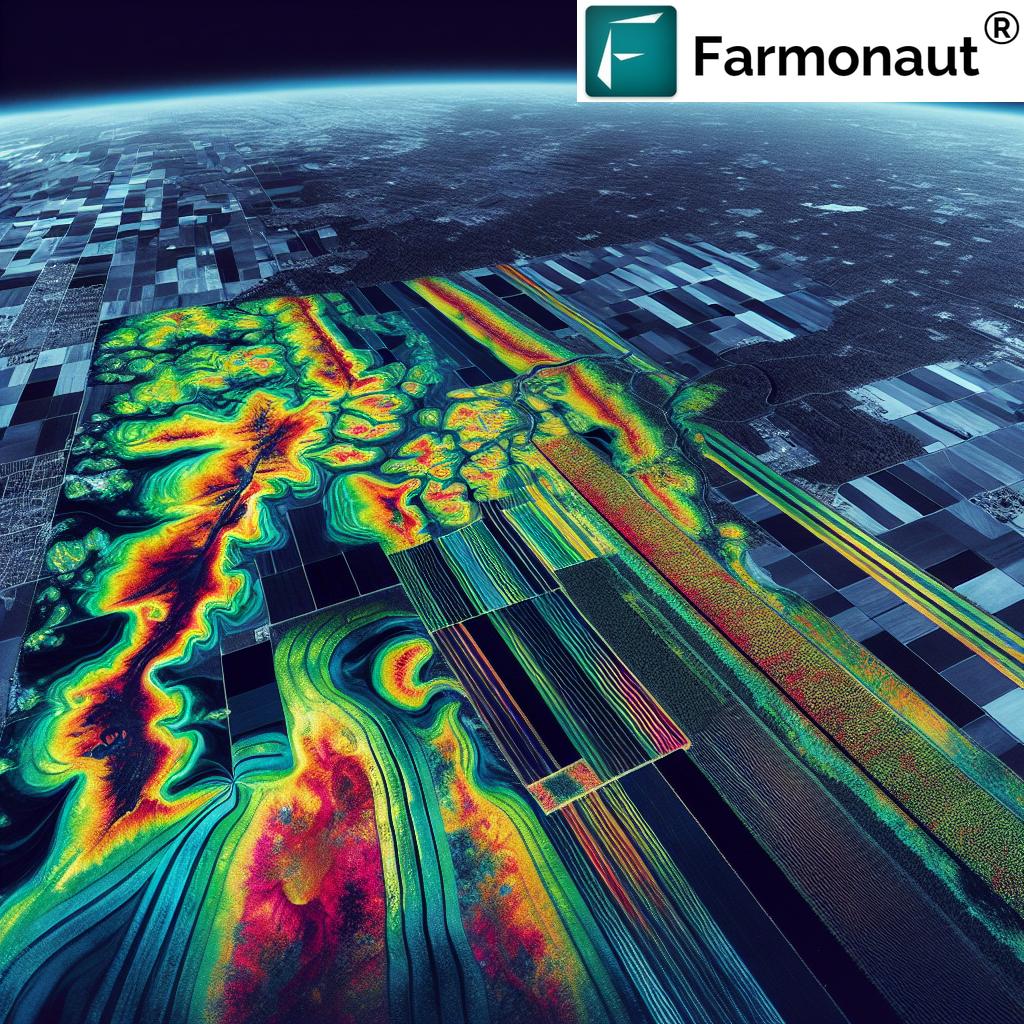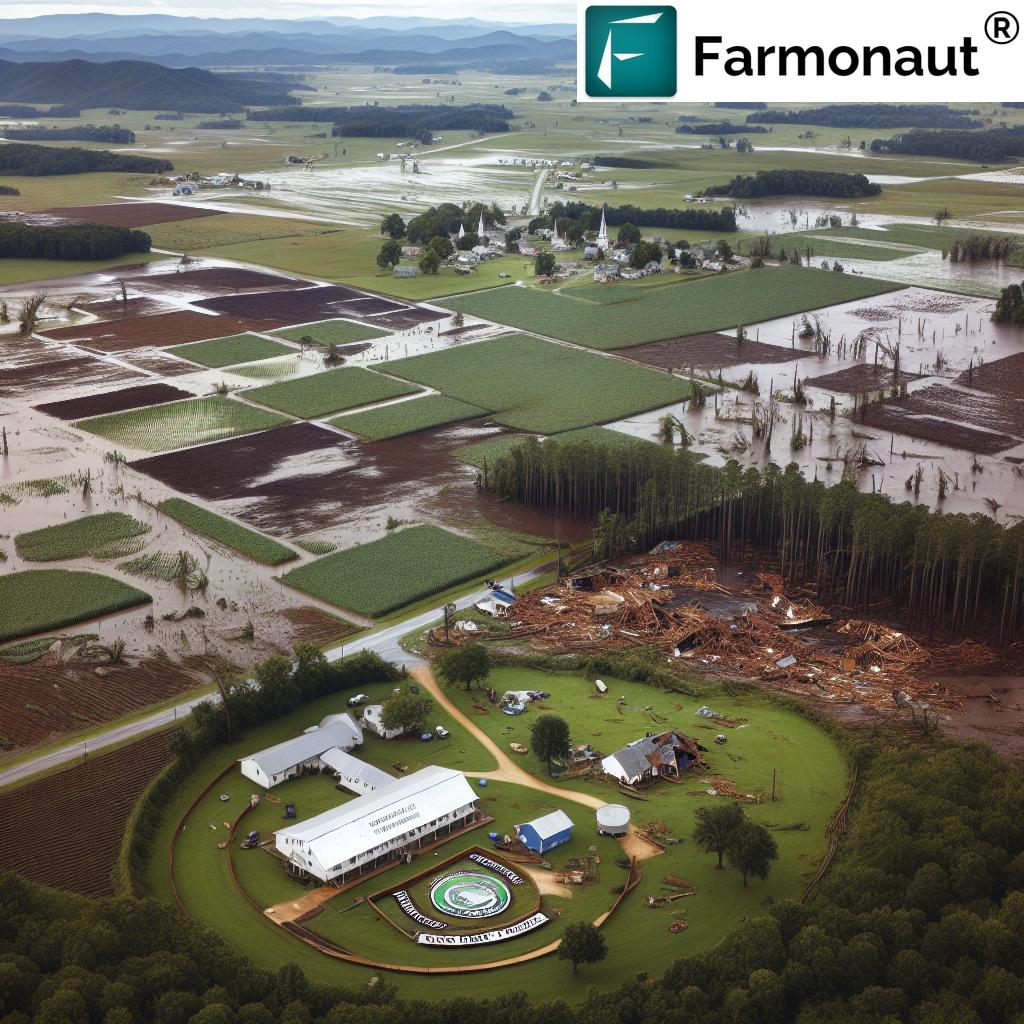Iowa Crop Progress: Spring Planting Conditions and Weather Trends for Farmers
“Iowa’s oats seeding reached 20% completion, surpassing the 5-year average for spring planting progress.”
As we embark on the 2025 growing season in Iowa, we’re excited to share the latest Iowa crop progress report and analyze the spring planting conditions in Iowa. This comprehensive overview will provide valuable insights into the state’s agricultural landscape, weather patterns, and crop management strategies for farmers and agribusinesses alike.
Overview of Iowa’s Agricultural Landscape
Iowa, known as the Hawkeye State, has long been a cornerstone of American agriculture. With its fertile soils and favorable climate, Iowa consistently ranks among the top producers of corn, soybeans, and other essential crops. As we delve into the Iowa agricultural statistics for spring 2025, we’ll explore how recent weather trends and field conditions are shaping the outlook for the upcoming growing season.
The USDA National Agricultural Statistics Service has released its weekly report, offering a detailed look at Iowa weather and crop conditions. This data is crucial for farmers, agricultural experts, and policymakers as they make informed decisions about planting, resource allocation, and crop management strategies.

Spring Planting Conditions and Fieldwork Progress
The spring planting conditions in Iowa for 2025 are showing promising signs, with improved moisture levels across the state. Recent rainfall has boosted both topsoil and subsoil conditions, potentially alleviating previous drought concerns. Let’s break down the key factors influencing fieldwork and planting progress:
- Days Suitable for Fieldwork: Iowa farmers had an average of 3.3 days suitable for fieldwork during the week ending April 6, 2025. This allowed for some initial planting activities and field preparations.
- Oats Planting Progress: The oats planting progress in Iowa has reached 20% completion, which is 2 days ahead of the 5-year average. This early progress bodes well for the overall planting season.
- Fieldwork Activities: Farmers have been able to engage in minimal fieldwork, including planting oats, applying anhydrous, and spreading dry fertilizer.
These conditions highlight the importance of timely and efficient field operations. Farmers looking to optimize their planting schedules and monitor crop health throughout the season may benefit from advanced technologies like those offered by Farmonaut. Their satellite-based crop monitoring system can provide real-time insights into field conditions, helping farmers make data-driven decisions about planting and crop management.
Iowa Soil Moisture Levels
“Recent rainfall in Iowa has improved both topsoil and subsoil moisture levels, potentially alleviating previous drought concerns.”
One of the most critical factors for successful crop establishment and growth is adequate soil moisture. The latest Iowa crop progress report provides encouraging news regarding Iowa soil moisture levels:
- Topsoil Moisture: 6% very short, 22% short, 68% adequate, and 4% surplus
- Subsoil Moisture: 10% very short, 34% short, 55% adequate, and 1% surplus
These improved moisture conditions are a welcome change from previous years when drought concerns were more prevalent. The increase in adequate to surplus moisture levels provides a solid foundation for crop germination and early growth stages.
For farmers looking to maximize the benefits of these improved moisture conditions, Farmonaut’s AI-powered advisory system, Jeevn AI, can provide personalized recommendations for irrigation and resource management based on real-time satellite data and weather forecasts.
Iowa Rainfall Totals and Temperature Trends
Understanding the recent Iowa rainfall totals and temperature trends is crucial for predicting crop development and potential challenges throughout the growing season. Let’s examine the weather data provided by the Iowa Department of Agriculture and Land Stewardship:
Rainfall Analysis
- Unseasonably wet conditions were observed across the state, particularly in northwest and southern Iowa, where rainfall exceeded 200% of normal levels.
- The statewide weekly average precipitation was 0.88 inch, surpassing the normal of 0.67 inch.
- Rainfall totals varied significantly, ranging from 0.14 inch in Earling (Shelby County) to 2.03 inches in Fonda.
Temperature Analysis
- Iowa’s average temperature for the reporting period was 40.7 degrees Fahrenheit, 2.6 degrees below normal.
- Temperatures were colder than average in the northwest corner of the state, while near-normal conditions were observed in the southeast.
- The week’s high temperature of 75 degrees Fahrenheit was recorded at multiple eastern Iowa stations on April 2nd, approximately 17 degrees above average.
- The week’s low temperature of 18 degrees Fahrenheit was reported in Audubon County on April 6th, 14 degrees below normal.
These weather patterns have significant implications for crop development and field operations. Farmers can leverage tools like Farmonaut’s weather data analysis and forecasting features to make informed decisions about planting dates, pest management, and resource allocation based on localized weather trends.

Regional Variations in Iowa’s Agricultural Conditions
Iowa’s diverse landscape leads to notable regional variations in weather patterns and crop progress. Let’s examine how different areas of the state are faring:
Northwest Iowa
- Experienced significantly above-average rainfall, with some areas receiving over 200% of normal precipitation.
- Cooler temperatures compared to other regions, potentially delaying some early planting activities.
Southern Iowa
- Also saw above-average rainfall, contributing to improved soil moisture conditions.
- Temperatures were closer to normal, providing favorable conditions for early fieldwork.
Eastern Iowa
- Recorded some of the highest temperatures during the reporting period, with multiple stations reaching 75 degrees Fahrenheit.
- Rainfall was generally adequate, supporting good planting conditions.
Central Iowa
- Experienced a mix of weather conditions, with some areas receiving significant rainfall.
- Soil temperatures are gradually warming, setting the stage for corn and soybean planting in the coming weeks.
These regional variations highlight the importance of localized crop monitoring and management strategies. Farmonaut’s crop plantation and advisory services can help farmers tailor their approaches based on specific regional conditions, ensuring optimal crop health and yield potential.
Iowa Fieldwork Conditions and Planting Progress
As we delve deeper into the Iowa fieldwork conditions, it’s clear that farmers are eager to begin their spring planting activities. The USDA crop progress Iowa update provides valuable insights into the current state of fieldwork and planting progress:
- Oats Seeding: 20% complete, 8 days behind last year but 2 days ahead of the 5-year average
- Oats Emerged: 2% of the crop has emerged
- Other Fieldwork: Minimal fieldwork was conducted during the week, but some producers were able to apply anhydrous and dry fertilizer
These statistics indicate that while planting is slightly behind last year’s pace, it remains ahead of the long-term average. This progress is particularly noteworthy given the challenging weather conditions experienced in some parts of the state.
For farmers looking to optimize their planting schedules and monitor crop emergence, Farmonaut’s satellite-based crop monitoring system can provide valuable insights. This technology allows for real-time tracking of field conditions and crop development, helping farmers make data-driven decisions throughout the growing season.
Comparison: Iowa Spring Planting Conditions 2025 vs. 5-Year Average
| Metric | 2025 Value | 5-Year Average |
|---|---|---|
| Oats Seeding Completion (%) | 20% | 18% |
| Topsoil Moisture (% Adequate to Surplus) | 72% | 65% |
| Subsoil Moisture (% Adequate to Surplus) | 56% | 60% |
| Average Temperature (°F) | 40.7°F | 43.3°F |
| Total Precipitation (inches) | 0.88 inches | 0.67 inches |
This comparison table highlights some key differences between the current spring planting conditions and the 5-year average. Notable improvements can be seen in oats seeding completion and topsoil moisture levels, while subsoil moisture and average temperatures are slightly below the long-term average.
Implications for Crop Management and Decision-Making
The current Iowa weather and crop conditions present both opportunities and challenges for farmers as they plan their crop management strategies for the 2025 growing season. Here are some key considerations:
- Planting Timing: With improved soil moisture conditions, farmers may be tempted to begin planting early. However, it’s crucial to consider soil temperatures and long-term weather forecasts to ensure optimal germination and early growth.
- Fertilizer Application: The recent rainfall may have impacted nutrient availability in the soil. Farmers should consider soil testing and precision application techniques to optimize fertilizer use efficiency.
- Pest and Disease Management: The wet conditions could potentially increase the risk of certain pests and diseases. Early scouting and preventive measures may be necessary to protect young crops.
- Water Management: While current moisture levels are favorable, farmers should plan for potential dry spells later in the season. Implementing efficient irrigation systems and water conservation practices can help mitigate future risks.
To address these challenges and make informed decisions, farmers can leverage advanced technologies like those offered by Farmonaut. Their satellite-based crop monitoring and AI-powered advisory systems can provide real-time insights into field conditions, crop health, and potential issues, enabling proactive management strategies.
Leveraging Technology for Precision Agriculture in Iowa
As Iowa farmers navigate the complex landscape of spring planting and crop management, integrating advanced technologies can significantly enhance decision-making and operational efficiency. Farmonaut’s suite of precision agriculture tools offers several benefits for Iowa’s agricultural community:
- Real-time Crop Health Monitoring: Farmonaut’s satellite-based monitoring system provides up-to-date information on crop health, allowing farmers to identify and address issues promptly.
- AI-powered Advisory: The Jeevn AI system offers personalized recommendations based on field-specific data, helping farmers optimize resource use and improve crop yields.
- Weather Data Analysis: Access to detailed weather forecasts and historical data enables better planning for planting, fertilizer application, and other critical farm operations.
- Resource Management: Farmonaut’s tools can help farmers track and optimize the use of water, fertilizers, and other inputs, promoting sustainable farming practices.
For Iowa farmers looking to enhance their operations with these advanced technologies, Farmonaut offers flexible subscription options to suit various farm sizes and needs.
Future Outlook and Considerations
As we look ahead to the remainder of the 2025 growing season in Iowa, several factors will play crucial roles in shaping agricultural outcomes:
- Long-term Weather Patterns: Continued monitoring of temperature trends and precipitation levels will be essential for adapting crop management strategies throughout the season.
- Market Conditions: Farmers should stay informed about commodity prices and market trends to make informed decisions about crop selection and marketing strategies.
- Technological Adoption: Embracing precision agriculture technologies can help Iowa farmers stay competitive and resilient in the face of changing environmental and economic conditions.
- Sustainability Practices: Implementing conservation tillage, cover crops, and other sustainable farming practices can help improve soil health and long-term productivity.
By staying informed about Iowa agricultural statistics and leveraging advanced technologies, farmers can position themselves for success in the 2025 growing season and beyond.
Conclusion
The spring 2025 Iowa crop progress report paints a generally positive picture for the state’s agricultural sector. Improved soil moisture conditions, coupled with slightly ahead-of-average oats planting progress, provide a solid foundation for the growing season. However, farmers must remain vigilant and adaptable, considering regional variations in weather patterns and potential challenges that may arise.
By leveraging advanced technologies like those offered by Farmonaut, Iowa farmers can enhance their decision-making processes, optimize resource use, and potentially improve crop yields. As the growing season progresses, staying informed about Iowa weather and crop conditions will be crucial for successful crop management and agricultural productivity.
FAQ Section
- Q: How does the current oats planting progress in Iowa compare to previous years?
A: The 2025 oats planting progress in Iowa is currently at 20% completion, which is 2 days ahead of the 5-year average but 8 days behind last year’s pace. - Q: What are the current soil moisture conditions in Iowa?
A: As of the latest report, topsoil moisture is 72% adequate to surplus, while subsoil moisture is 56% adequate to surplus. These levels show improvement compared to previous drought concerns. - Q: How can Iowa farmers benefit from using Farmonaut’s technology?
A: Farmonaut offers satellite-based crop monitoring, AI-powered advisory systems, and weather data analysis tools that can help farmers make informed decisions about planting, resource management, and crop health monitoring. - Q: What are the main factors influencing spring planting conditions in Iowa for 2025?
A: Key factors include improved soil moisture levels, recent rainfall patterns, temperature trends, and regional variations in weather conditions across the state. - Q: How can farmers access Farmonaut’s services?
A: Farmers can access Farmonaut’s services through their web application, mobile apps (available for both Android and iOS), or API integration for custom solutions.
Earn With Farmonaut: Join Farmonaut’s affiliate program and earn a 20% recurring commission by sharing your promo code and helping farmers save 10%. Onboard 10 Elite farmers monthly to earn a minimum of $148,000 annually—start now and grow your income!
Learn more about the Farmonaut Affiliate Program
Stay informed and make data-driven decisions for your farm with Farmonaut’s advanced agricultural technologies:
For developers and businesses looking to integrate Farmonaut’s powerful satellite and weather data into their own systems, explore our API and API Developer Docs.













